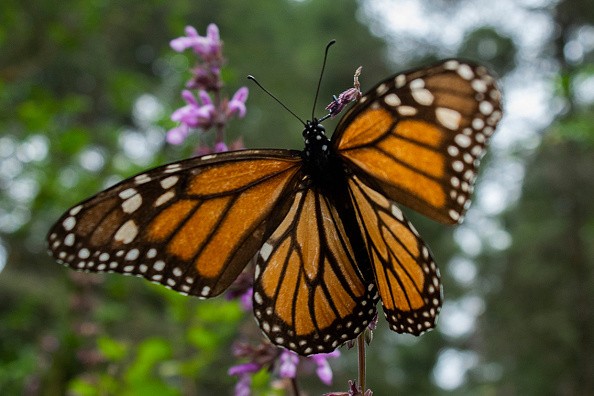Western monarch butterfly increased to over 247,000, which is a lot more than the number seen in California over a year ago. Despite this population increase, it still has not surpassed the population in the 1980s.

Population Fluctuations of Monarch Butterflies
Emma Pelto, a senior endangered species biologist with the Xerces Society for Invertebrate Conservation, has stated that this was a great rebound.
However, it cannot be compared to the population in the 1980s as it is still less than 5% of the previous population, although this was quite a relieving turn out of an event for this species.
Pelton said that more observation has to be done because this improvement might still deteriorate. In an online news conference Pelton said, "It will take multiple more years to understand if this is the beginning of a trend or just a blip," according to Phys.org.
Butterflies population count is done by volunteers trained for over several weeks and over a year ago, it was observed to have lost over 95% of its population. The disturbing population count was the smallest ever seen, the reason for this huge decrease was difficult to explain.
In the recent count, the butterfly population rose to a huge number and was seen in over 283 locations, the highest amount of location recorded so far in history.
Pelton is surprised by these fluctuations in the butterfly population as she still has yet to explain the reason for this decrease and increase.
Possible Reasons for Population Fluctuation of Monarchs
Good weather, the amount of milkweed the butterflies depend on, and some interchange between the Western and Eastern populations could be among the factors that affect population fluctuation of the butterfly. But the monarchs have a complex migratory cycle with multiple generations over a complex landscape.
Pelton stated, "The question of the day that we're getting is really, why are we having this uptick? And we don't have a single definitive answer for you," as per The Guardian.
She believes the number of this species will continue rising and falling until they crack the mysteries behind these changes.

Places with the Highest Number of Monarchs
From their observations and details of the data, the overwintering location started south. Among other locations, the California central coast and the San Francisco bay area have the most population of the western monarch.
The biggest population was found in Santa Barbara County which was more than 95,000, including one site on private property that had 25,000 butterflies. Also, Ventura County had nearly 19,500 butterflies and Los Angeles County had more than 4,000, this population hasn't been recorded since the early 2000s.
The region where the least butterflies were found is within the bay area site, this location sometimes has a few or no butterflies.
More research on the population glitch of this species is still ongoing as Pelton and her team of researchers will continue digging deep till they discover the reasons behind the changes in the western monarch population.
Related Article : Butterfly Guides in Mexico Hopes For an Increase in Monarch Population
For more news, updates about monarch butterfly and similar topics don't forget to follow Nature World News!
© 2025 NatureWorldNews.com All rights reserved. Do not reproduce without permission.





